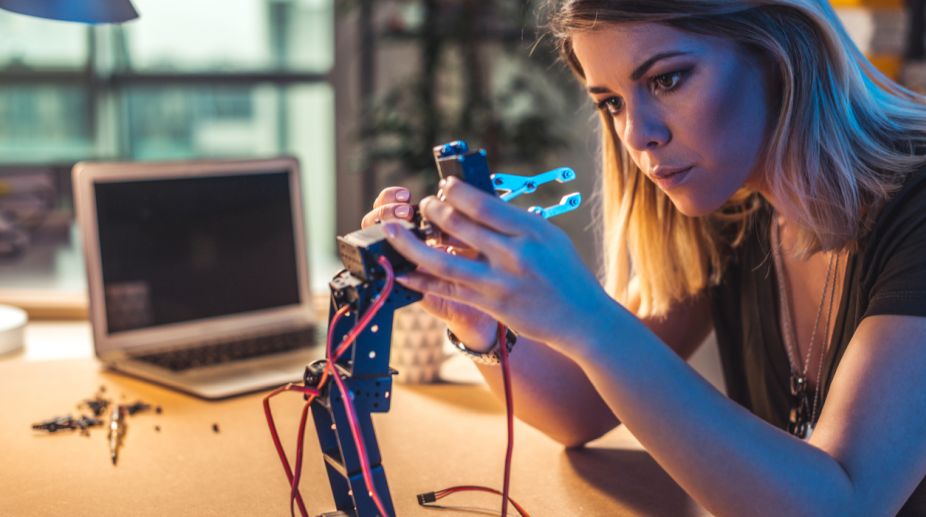With a median age of 29, India is set to be the youngest nation in the world by 2020. And by 2025, it is estimated that 70 per cent of the population will be in the working age group. Will be there be enough jobs for all of them?
According to a National Skill Development Corporation report 109.73 skilled workforces will be needed by 2022. But India’s situation is ironic. On the one hand, economic growth has created huge employment demands and job opportunities, on the other— shortage of skills is making more people unemployable. The growing disconnects between higher education and industry requirement is a matter of grave concern.
Advertisement
Even as graduates after graduates pass out universities and aspire for a good job, their lack of requisite skills stands in the way of getting a good break. With our over-emphasis on academic performance, universities and academic institutions are producing youngsters with degrees but not employability and the gap between the two gets wider. One of the biggest challenges hiring managers’ face today is finding candidates with the right skill sets. Being educationally qualified is one thing, being job-ready quite another.
So how do we bridge the gap? Vocational and skill development training, if delivered in a balanced and well-defined manner, can help bring talent to industry. In this context, private vocational training institutes can play a vital role in helping the government with skill development, especially in the field of technology. Recruiters test you on various parameters like knowledge of core subjects, reasoning aptitude, adaptability and soft skills and most importantly your technology knowhow. It is the job of placement institutes to make students aware of the various avenues and build on their employability skills.
Here are some important aspects that educational, vocational training and placement institutes should focus on to ensure that their students get job-oriented education and training. Internalise knowledge by assimilating contents designed with the aid of 3D technology, augmented reality and virtual reality. M
ore scientific assessment aimed at finding and bridging knowledge gap and improving learning instead of filtering and ranking students. These will not only improve student quality, but also save time by automating the assessment process with latest image recognition technology. The devices are also modest which is just a web camera attached to teacher’s computer or laptop. Labs are no more the prerogative of science students at +2 levels. With the advent of technology, modern day classrooms are undergoing various changes.
Many schools have classrooms where focus is on learning by doing and EdTEch companies are working in this area. The government is slowly taking cognizance of the power of learning by doing at early stage of a student’s school years.
With a vision to cultivate one million children in India as Neoteric Innovators, Atal Innovation Mission is establishing Atal Tinkering Laboratories in schools. The objective is to foster curiosity, creativity and imagination in young minds and inculcate skills such as design mindset, computational thinking, adaptive learning, physical computing, etc. This will provide grant-in-aid that includes a one-time establishment and operational expenses.
Learning can be greatly reinforced by practice. Gamification in education makes practice fun and leads to greater retention of knowledge and learning. Massive Open Online Course and Learning Management Systems coupled with advances in smartphones are making learning personalised and flexible. Classroombased distance learning is becoming popular among working professionals but a lot of catching up is required in this area. Although, we are witnessing exponential changes in the way the education is delivered, one thing that remains constant is the presence of a human educator.
he role of this person needs to change from an enforcer to enabler. Emerging economies like India, carrying a colonial legacy of education system, are still hesitant to adopt technology. At present, nearly 80 per cent of new entrants to the country’s workforce get little or no opportunity for skills education. Merely 2.5 per cent is exposed to formal vocational training. Enrolling in such institute or hands-on skill course can be of great help to candidates looking out for employment opportunities. A number of government agencies and private institutes are imparting skill education, but there is little coordination between them.
Companies are partnering with various departments in offering skill building programmes for the country’s potential workforce in diverse sectors including agriculture, IT-ITES, retail, telecom, banking and accounting, among others. Private vocational institutes can give the government a big helping hand in skilling India and providing industry with job-ready candidates.
(The writer is the founder chairman, ICA Edu Skills Pvt Ltd)











